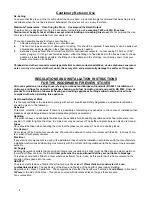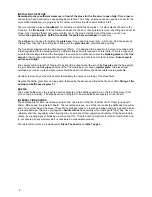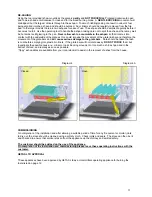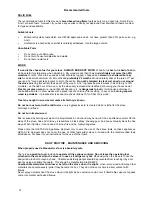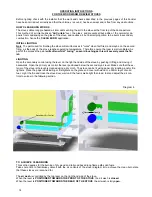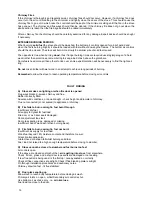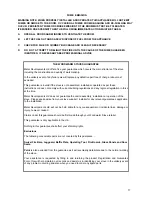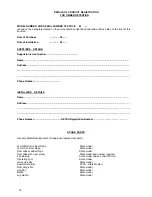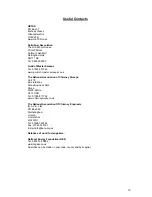
16
Chimney Fires
If the chimney is thoroughly and regularly swept, chimney fires should not occur. However, if a chimney fire does
occur turn the air control setting to the minimum, and tightly close the doors of the stove. This should cause the
chimney fire to go out in which case the control should be kept at the minimum setting until the fire in the stove
has gone out. The chimney and flue ways should then be cleaned. If the chimney fire does not go out when the
above action is taken then the fire brigade should be called immediately.
After a chimney fire the chimney should be carefully examined for any damage. Expert advice should be sought
if necessary.
EXTENDED BURNING PERIODS
When burning
solid fuel
the stove should be de-ashed, the bottom air controls opened for a brief period and
when the fire is burning brightly it should be loaded with fuel without dowsing the flames. The bottom air controls
should then be closed. The stove will burn more slowly if a smaller size of solid fuel is used.
The opposite is true when burning
wood
, thus if longer burning times are required use
dry
large logs of a hard
wood rather than small ones, remembering to keep a bed of ash above the grate bars.
Some fuels need more air than others to tick over, some experimentation will be necessary to find the right set-
ting.
Do not
mix solid fuel with wet wood in an attempt to achieve long periods of burning.
Remember
to allow the stove to reach operating temperature before closing air controls.
FAULT FINDING
A) Stove smokes on lighting or when fire door is opened
Flue ways blocked - sweep chimney and flue.
Baffle incorrectly fitted.
Adverse wind conditions, or down draught - check height and diameter of chimney.
Flue not connected (or not sealed) to appliance or chimney .
B) Fire fails to burn overnight - fuel burnt through
Insufficient dry fuel.
Air supply too great for fuel load.
Fire door or ash door seals damaged.
Door adjustment too slack.
Door glass sealing rope damaged or missing.
Insufficient bed of wood ash (when burning wood).
C) Fire fails to burn overnight - fuel not burnt
Insufficient air supply for fuel load.
Wood fuel beyond 18% moisture content and therefore too wet.
All section
A
applies also.
Grate closed or ashpan full whilst burning solid fuel.
Fuel load not raised to a high enough temperature before closing to slumber.
D) Stove cannot be closed to slumber and fuel burns too fast
Air controls open.
If the above are closed and/or shut then
air is getting into stove
from elsewhere.
Check if door, glass and ashpit door rope seals are damaged or not seating.
If rear flue outlet is being used, is the flat top / canopy seated on correctly.
Check all flue connections are airtight. Check if flue blanking plate is airtight.
Go through installation procedures and cautionary notes.
Chimney draw too fast - fit flue stabiliser.
E) Door glass sooting up
Allow stove to reach body temperature before closing air wash.
Primary air inlets on open, whilst Secondary air control is shut.
Use bottom air as choke only - i.e.
minimal use.
Fuel load too close to the door.
Summary of Contents for Fox Fire
Page 20: ...20 30 09 09...



